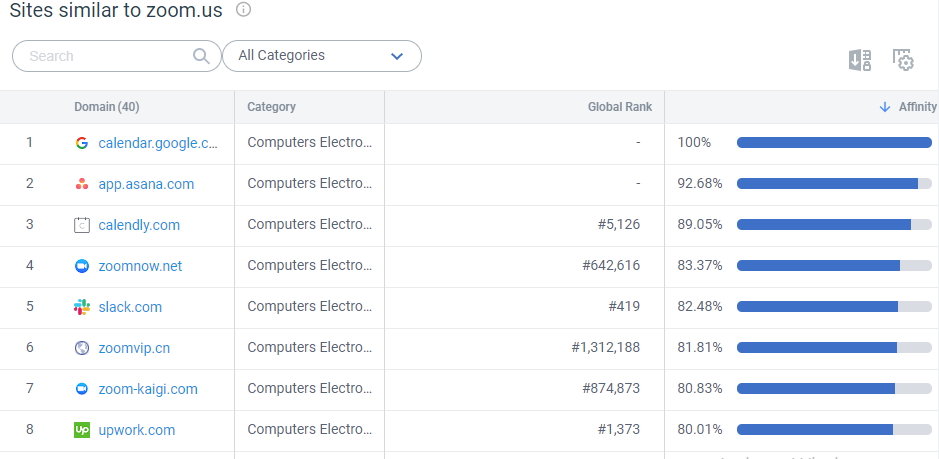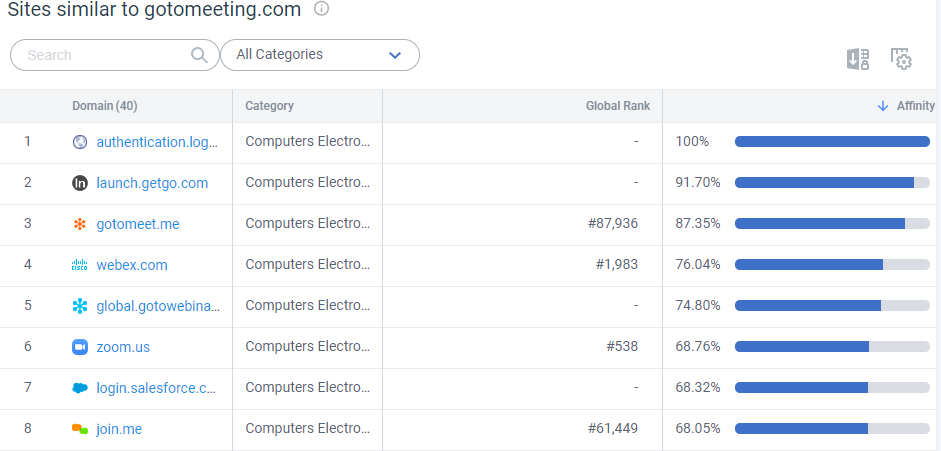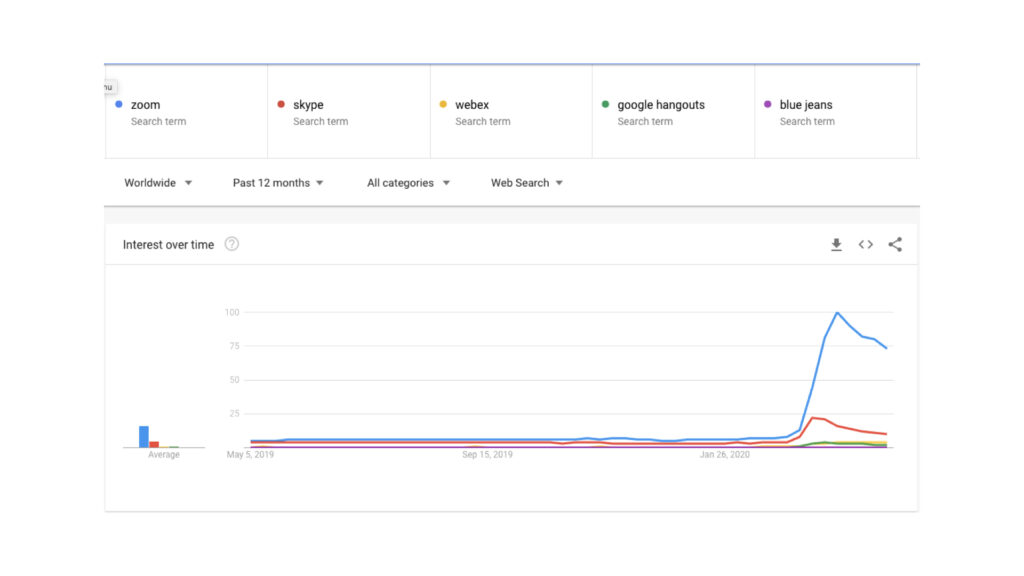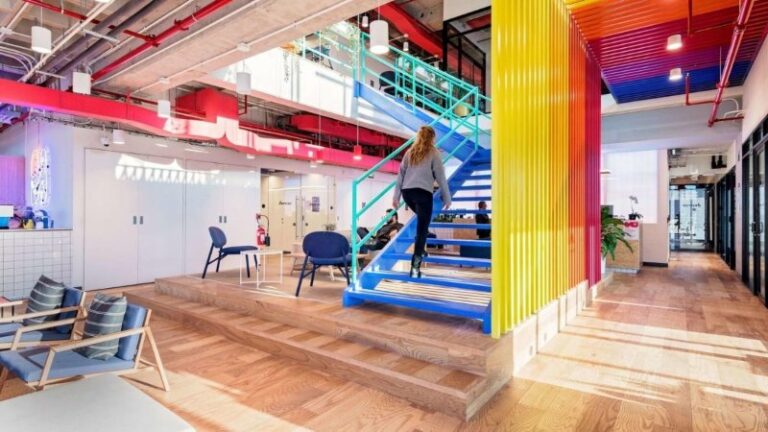We are back with another deep-diving innovation case study. This time we are studying the king of video conferencing: Zoom Video.
The Zoom business is growing like crazy. In December of 2019, they had 10 million meetings a day. Fast forward to April, it’s 200 million meetings a day, by the end of the month, over 300 million participants per day on their platform.
Does the global work from home trends account for all this growth? Nope! They have been laying the foundation for growth over the last nine years. Zooms hard work and preparation was everything. Today Zoom is in the right place and the right time.
Here are the 12 reasons why Zoom dominates the video conferencing business. Their success factors span product, people, promotion and profit.
Product
1. Zoom is video first.
Zoom is built, designed, and managed to be a video-first product. It is not an old audio product that has had video features layered on top of it. It was designed as a video product from day one.
So when you’re in a Zoom conference call, everything is all about delivering the very best video, time and again. And quality is one thing they got very right because of their focus, maybe the obsession with the video quality.
I find that I’m often presented with inferior video quality in Hangouts and Skype, and especially when there’s more than two of us on the call. To illustrate this point, I found a video where a group of people did the same meeting at the same time in different platforms. So we can see the difference.
Zoom Versus Hangouts
Google Hangouts
- Good for one to one
- Good for GSuite integration
- Good browser-based solution
- Poor for large groups (max 25 video users in one call, max 250 audio)
Zoom Video
- Good for HD
- Good for large groups (max 100 video users in one call, max 1,000 audio)
- Payment required for premium features
Zoom video quality is useful in a one-on-one situation but at scale with lots and lots of people is where it excels.
2. Zoom Is Cloud-First
Zoom has several first principles. The next one is that they are cloud-first. This approach means they are not tied down to legacy technologies that are not designed and built for the cloud.
A classic comparison is Microsoft Teams. It’s got a SharePoint architecture as part of its core. And if any of you are old as I am, you’ll remember that SharePoint is undoubtedly not a cloud-first technology.
This legacy creates all sorts of limitations for Teams in terms of scale and growth. What’s so uniquely strong about the cloud and the way it performs is it helps you scale. That’s why Zoom has more than ten times the daily usage of Microsoft Teams.
Here’s what Zoom is doing in their application architecture that helps them to scale.
- Number one, they just have a better network. What they do is they use a distributed network, and this is not unsimilar to how Netflix delivers excellent quality. Netflix installs media appliances in ISP close to the delivery point, so it’s a distributed network, in the same way, Zoom has over 13 data centres. And each of them is trying to work hard to spread the video traffic workload. To use a traffic analogy, you don’t have one highway which is trying to deal with all the traffic. It’s distributed across a network of different roads.
- The second feature of the cloud approach is called multimedia routing, and this helps them deliver more than one stream at a time. What happens is this multimedia routing enables not just one, but several video streams between people to be used, distributed concurrently.
- Now when we think about the last mile, the third scale tactic is they use this multi-bitrate encoding. What happens is if it’s congested in your local network, maybe at home or by the office, they’ll drop the bit rate or the file size that they’re trying to deliver of all the audio and video. Zoom is adapting the video bandwidth even at that last mile at the very last moment.
- The last thing that they do is that they have an application layer that manages the quality of service. The layer oversees the three other points that I mentioned: the network, multimedia routing, multi-bitrate encoding.
3. Zoom Is Customer-First
Customer satisfaction at Zoom is off the charts. It’s quite remarkable compared to all of their competitors. They have ridiculously positive reviews. You can see that they have a 95% recommendation rate There are a few products in this world that can consistently hold that sort of recommendation.
The other interesting side note here is if you want to talk about recommendation rates. The only thing that’s better than customer feedback is the NPS of their employees. They’re so damn happy in the company that they’ll recommend it to family and friends as well. But we’ll talk more about that later in this series.
How does Zoom create all the customer positivity? They continuously gather customer feedback and act on the suggested improvements. They also tack their NPS as a gauge of how they’re doing.
In a world of Google and Microsoft ecosystems containing hundreds of products – Zoom chose just one. They made a straightforward and intuitive decision to be video first, and they’ve got such an incredible focus on that. And customers are raving about it. And the growth story tells you everything about their competitive advantage.

People
4. A Vision Of ‘Frictionless Video’
What makes the culture of Zoom so distinct is they have a vision of the perfect world that they want to create, and they call it frictionless video communication. This vision is at the heart of how the company was formed. So let’s have a listen now to the founder of zoom, Eric Yuan, talking about the visions.
What’s compelling about this kind of vision is that it has become their North star. This is the lense that determines the product they’re building. The idea is the measure of everything they do as a team. Just try Googling ‘Frictionless Video’ zoom, and you’ll get over 175,000 results.
5. A Culture Of Delivering Happiness
‘Delivering happiness’ is not just a slogan sprouted by CEO Eric Juan. In fact, with all the constituents in their community, they have this idea of building a culture of happiness. and it has become the organizing principle by which they decide how they’re going to do things internally.
And once again, I’ve been able to dig up this great little interview with Eric Yuan, the founder, and we’re going to have a listen to him talking about this idea of happiness.
What’s clear is that they make decisions based upon what it is going to help them deliver happiness to their customers and employees. And this is powerful because this is what can organize their culture and help them provide frictionless video communications.
6. Employees Are Gushing
Glassdoor has become a defacto standard for measuring the culture of an organization. And Zoom results on Glassdoor are off the charts.
I have not seen employee satisfaction results this good: 4.7/5.0 rating from employees, with a 96% friend recommendation rate and a CEO approval rate of 98%. These results are as good as, if not even a little bit better than Airbnb at its prime.
There are some fun insights in the commentary on Glassdoor. The listing contains both positive and negative criticism. One of the most popular negative comments was, “bottom line zoom does a great job taking care of its employees.” That’s not even negative.
I’m exaggerating, but my point is that advocacy is such a leading indicator, not only with NPS, with your clients, with your customers, but also on the inside. And if you keep the promises that you make to your team and your customers, they will be your biggest fans. The tough job is you’ve got to keep your word. So if you’re going to promise something, make sure you do it.
Promotion.
We’ve looked at the product and people characteristics of Zoom, and they’re pretty faultless. They’ve had their hiccups with privacy and security but their growth continues unabated. We’re now going to step into the world of Zoom and promotion. And I’m going to show you some killer tactics and mental models that will help you grow your business and grow the bottom line too.
7. Full-Stack Partnerships
Now, this is perhaps one of the most powerful things that I’ve discovered in studying Zoom to kind of work out how they’ve thrived in their category.
Zoom has built a series of full-stack partnerships in the productivity suite. And this is a rather contrarian approach. Generally, brands tend to converge all into the same place. With Zoom, it’s the same promises and gimmicks, only a little different.
Zoom built their business using a different approach to the competitive set. They’ve become an essential part of the productivity world, rather than just another ‘video conference’ player.
If you look at the website of Zoom and the website of WebEx, you notice that there’s this significant difference at the level of most related websites. Zoom is highly associated with complementary products, such as calendars, and not towards competitive products, such as Webex.
The one website that is most related to Zoom is Google Calendar. The next one is Asana, and the next one is Calendly. What’s the insight here? Well, these are all complementary tools that go with Zoom together that help you get a job done, help you be productive.
Now let’s look at WebEx. The most related website is a help website, but then the list is full of other conferencing tools. So Webex is stuck in the ‘video conference’ category while Zoom is a go-to part of productivity.


Zoom achieved this by making strong product level partnerships. They are part of other people’s products. So they are deeply related to the job to be done – be productive, connect with others, do a deal, have a meeting, present, share, collaborate.
This association is a massive gain because by embedding their product in other products, they have achieved substantial differentiated growth – pre quarantine and pre-work from home.
8. Zoomtopia
The second essential approach to promotion is to bring people together, and they have a signature event called Zoomtopia.
Now, the crazy thing is here; I want you to remember this is a video conferencing tool. If you take a look at Zoomtopia, this is more like a Ted event than a boring tech conference. It’s remarkable that they can create so much excitement around their mission and their vision of ‘Frictionless Video’ and bringing happiness to others.
You might be tempted to say this looks like a Dreamforce event. But consider this. Do you think people would get excited like this for a Skype event? Or would anyone even turn up for a Google Hangouts event?
To get this much excitement around a utilitarian product like Zoom is exceptional, and it goes to speak to the stories that they tell and how much they resonate with their community.
9. Customized Sales Training
Let’s put down the glow sticks for a second. Enough raving. We’re going to segway to the hard graft of sales of enterprise sales. And what I discovered is they have an intense and rigorous training for their sales team.
When a salesperson joins Zoom, they get them to jump into their Academy where they give a general onboarding. Then follows Bootcamp, which is very different. It’s not the general onboarding kind. This camp is job-specific, role-specific, and they get very deep into your job.
Both onboarding and Bootcamp are taught by existing execs and team members inside the company. So you’re guided by your peers and your colleagues, which I think is very powerful, and they keep going. Once you’re fully on board, they put you in their Elevate program. This is all about your personal growth and seeing to it that you grow, that you’re challenged, that you’re fulfilled and satisfied.
Profit
10. Strong Premium Offering
Here we are, the fourth P profit. How does Zoom put the dollars in the bank? How do they grow? What’s the economic model? Are they creating value? Are they capturing value? Well, the answer is yes, yes, yes and yes. Let’s get straight into it.
This idea is a little bit counterintuitive. Zoom makes lots of money because they have a robust freemium model.
What makes it counterintuitive is that they’re giving away an excellent product for free, but here’s how it makes sense. This no-charge giveaway is the biggest money earner ever. What they discovered is that if you try the free one, you will go on to buy the premium one
This model is not just the SAAS direct to consumer model. This model even works on massive clients. Check this number out: 55% of Zoom’s enterprise deals over 100,000 started with a user trialing a free version of the product.
So if you ever were in doubt about the freemium model, this is all the proof you need. By giving their product to people to try out, even if it’s just a basic version, they end up converting them, not just for hundred dollar deals, but well over a hundred thousand dollar deals.
11. They Have A Huge Market
Now, the crazy thing here, and this market is unique; this is even to a greater extent than Revolut in our recent case study. Zoom enjoys one of the biggest addressable markets I’ve ever seen. Because frankly, who’s their market? EVERYONE.
I’m going to show you what happens when you’ve done all the things we’ve talked about and how your market just explodes under the right conditions. So what I’ve done is I’ve taken a year’s worth of data from Google search.

It’s worldwide. And I’ve compared what happened during quarantine for several products: Zoom, Skype, WebEx, Google Hangouts and Blue Jeans. And the data is off the charts.
The nearest competitor to Zoom’s growth, when we talk about the volume of search, is maybe 20%, and that’s Skype. Maybe Skype got 20% of the increase of interest and searched queries to that of Zoom.
Zoom was always ahead pre quarantine, but when quarantine hit, it was such a perfect storm. All of the things I’ve been describing in this case study came together, and their business boomed more than three times as much as the nearest competitor.
This growth demonstrates how big their addressable market is and how well they’ve set up not only their product but also their brand to enjoy the bump.
12. Efficiency Increase Over Time: Economies Of Scale
Now we’re going to some microeconomics of how the business works, and this one is killer. It’s the utopia of all Chief Financial Officers: free cash flow. But what we’re going to see is something more significant than that – the economies of scale.
Free cash flow is something that businesses often talk about. The classic thing is when two big companies merge, they talk about economies of scale and things like that. They rarely ever work out to be so true. But what is crazy is over time Zoom’s efficiency increases.
And remember, more significant is often the thing that holds companies back. If you’re a vast Fortune 500 company, and you get anywhere close to double-digit growth, you’re like a superstar. Let’s get back to free cash flow and growth at Zoom.
In January 2017 operating expenses to sales was 79%, the same as it was in 2019. Zoon kept operating expenses to sales with 79% for two or three years running, while their gross margin increased from 79% to 82%.
During the period their percentage of costs didn’t change. They were able to keep hold of that, so they delivered to more customers for the same cost, but the top line grew from a 79 to 82 gross margin.
This efficiency means that just as Zoom grows, they don’t only make the total volume of profit more significant, the percentage of revenue increases because they’re able to control their expenses.
Let’s recap
You have been sort of blitzed with 12 different ideas around people, product, profit and promotion. Now let’s pull it all together. Zoom is a single-minded company with a deep focus on video. That’s number one, their success, and what we can take out of this is how to create a business and a product that is very focused.
I think they walk the talk here around happiness. They promise it. Sounds pretty big, but they actually deliver on it and that’s why their employees love them.
When we look at promotion, I think their best ambassadors, their best advocates are both customers and employees. And they get more profitable as they grow.
I hope you’ve really enjoyed this Zoom case study. The framework that we’ve used to dig into the business of Zoom has really been all anchored in what we call BottomUp Innovation. I hope all of you have been able to take a few ideas to use in your work.
If you’re at all interested in some of the topics that come up in this article you can get the free case study course here.




